A helicopter is moving to the right at a constant horizontal velocity. It experiences thre forces →Fgravitational,→Fdrag force on it caused by rotor →Frotor. Which of the following diagrams can be a correct free body diagram represents forces on the helicopter?

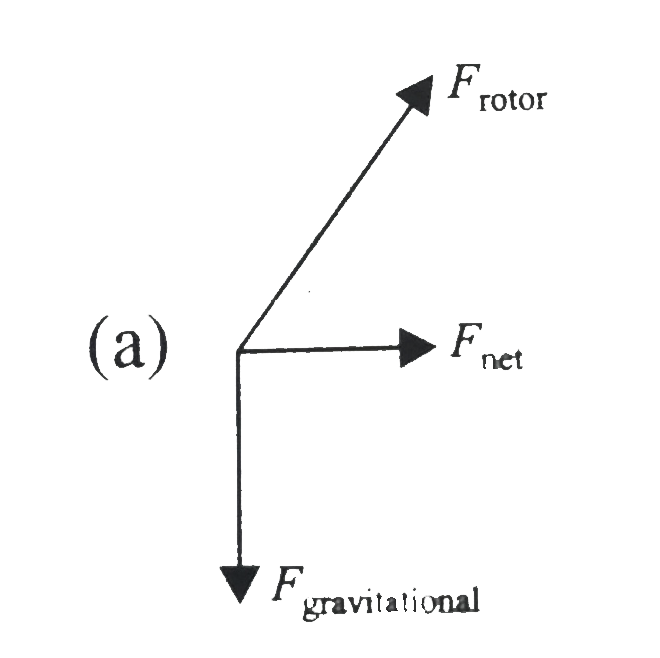
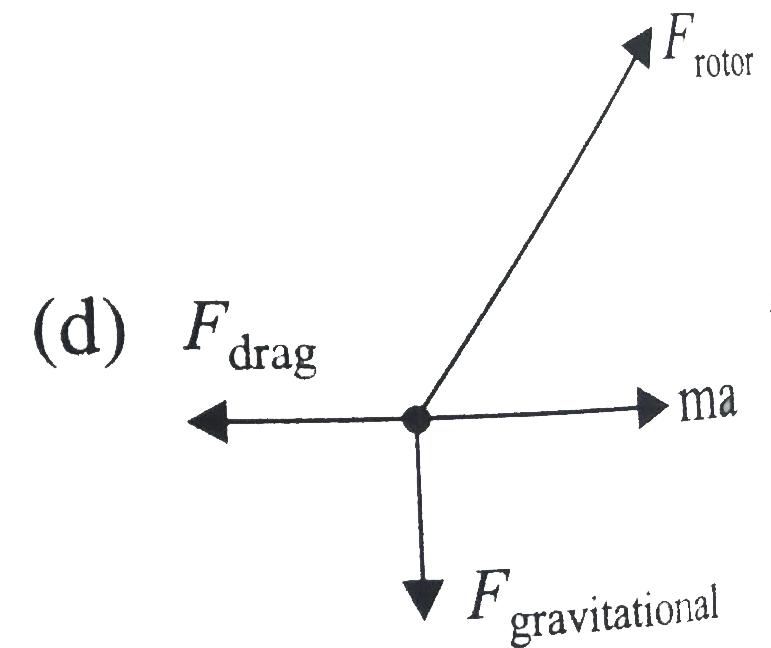
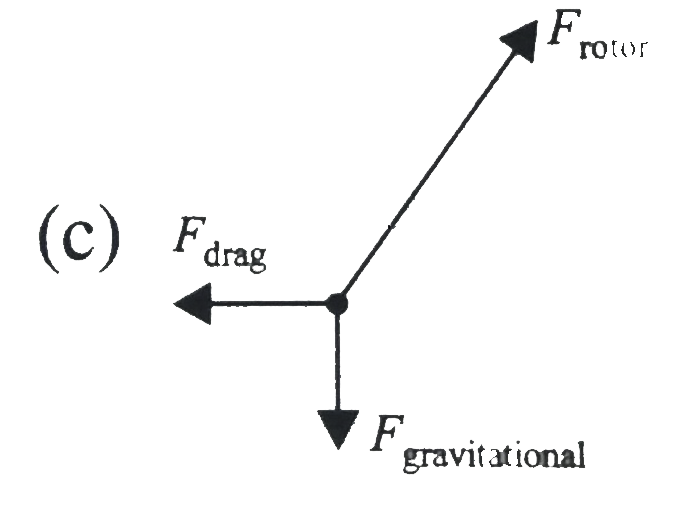
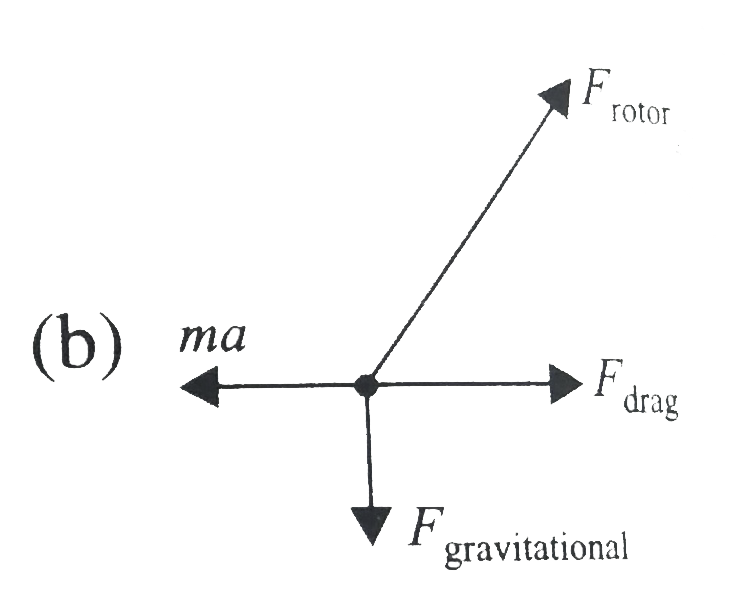
The correct Answer is:C


→Fgravitational acts downwards.
→Fdrag acts opposite to the direction of motion.
Now let us see how →Fro→r acts.
Wings of helicopter will push the air perpendicular to their plane or rotation as shown is figure (a). From third law, air will apply force →Fro→r on the wings as shown in figure (b).
There is no force ma. Basically ma is the resultant of all the forces acting on a body. moreover, here a is zero because velocity of helicopter is constant.
Topper's Solved these Questions
- CENGAGE PHYSICS DPPBOOK - CENGAGE PHYSICSCHAPTER - CENGAGE PHYSICS DPPEXERCISE - Fill in the blanks type
26 Videos
- CENGAGE PHYSICS DPPBOOK - CENGAGE PHYSICSCHAPTER - CENGAGE PHYSICS DPPEXERCISE - Comprehension Type
31 Videos
- CENGAGE PHYSICS DPPBOOK - CENGAGE PHYSICSCHAPTER - CENGAGE PHYSICS DPPEXERCISE - Multiple Correct Answer Type
54 Videos
- CAPACITOR AND CAPACITANCEBOOK - CENGAGE PHYSICSCHAPTER - CAPACITOR AND CAPACITANCEEXERCISE - Integer
5 Videos
- CENTRE OF MASS CONVERSATION OF MOMENTUM AND COLLISIONBOOK - CENGAGE PHYSICSCHAPTER - CENTRE OF MASS CONVERSATION OF MOMENTUM AND COLLISIONEXERCISE - Question Bank
38 Videos
Similar Questions
An electron moving with velocity →v1=1ˆim/s at a point in a magnetic field experiences a force →F1=−eˆjN where e is the charge of electron.If the electron is moving with a velocity →v2=ˆi−ˆjm/s at the same point, it experiences a force →F2=−e(ˆi+ˆj)N. Find the magnetic field and the force the electron would experience if it were moving with a velocity →v3=→v1×→v2 at the same point.
View SolutionA body is at rest under the action of three forces, two of which are →F1=4ˆi,→F2=6ˆj, the third force is
View Solution
Knowledge Check
Which one of the following diagrams shows the correct lines of force ?
A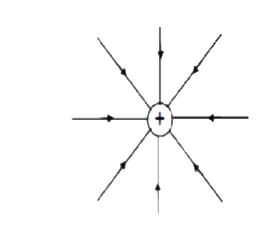 B
B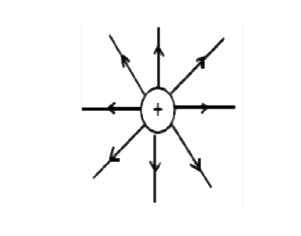 C
C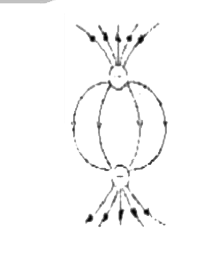 D
D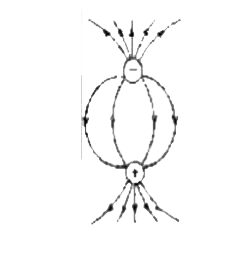
A force is applied to an object that is free to move. Which of the following statements is correct?
AThe frictional force is larger than the applied forceBThe frictional force is smaller than the applied forceCThe weight of the object is larger than the applied forceDAll of these statements could be correctThe helicopter in the drawing is moving horizontally to the right at a constant velocity. The weight of the helicopter is W = 53 800 N. The lift force →L generated by the rotating blade makes an angle of 21.0∘ with respect to the vertical as shown in the following figure. What is the magnitude of the lift force ?
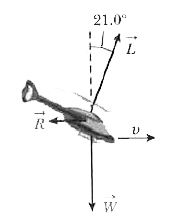 A18 800 NB57 600 NC20 600 ND37 600 N
A18 800 NB57 600 NC20 600 ND37 600 N
A ball of mass m kept at the corner as shown in the figure, is acted by a horizontal force F. The correct free body diagram of ball is
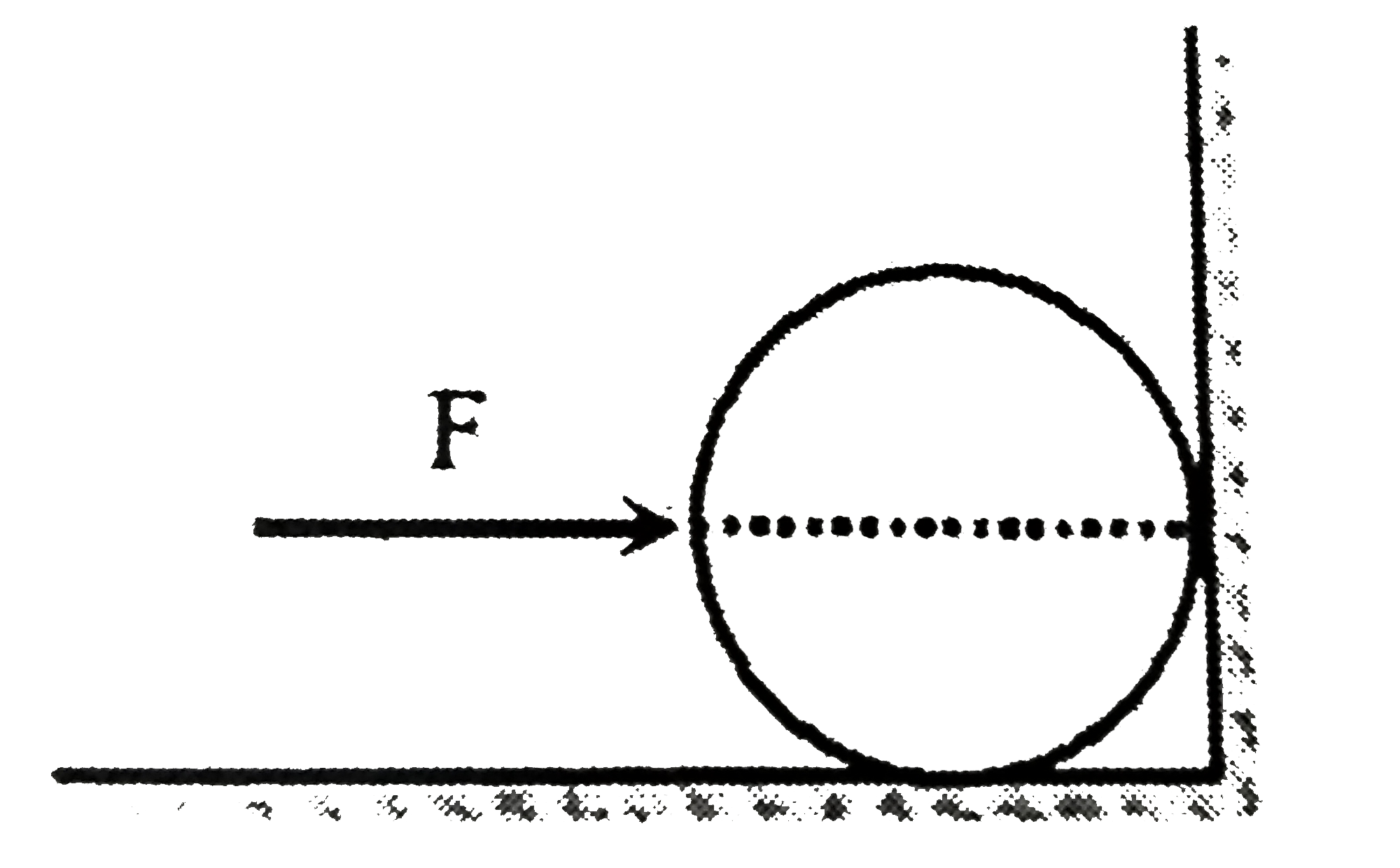
View SolutionA frame of reference that is accelerated with respect to an inertial frame of reference is called a non-inertial frame of reference. A coordinate system fixed on a circular disc rotating about a fixed axis with a constant angular velocity ω is an example of non=inertial frame of reference. The relationship between the force →Frot experienced by a particle of mass m moving on the rotating disc and the force →F∈ experienced by the particle in an inertial frame of reference is
→Frot=→Fin+2m(→vrot×→ω)+m(→ω×→r)×→ω.
where →vrot is the velocity of the particle in the rotating frame of reference and →r is the position vector of the particle with respect to the centre of the disc.
Now consider a smooth slot along a diameter fo a disc of radius R rotating counter-clockwise with a constant angular speed ω about its vertical axis through its center. We assign a coordinate system with the origin at the center of the disc, the x-axis along the slot, the y-axis perpendicular to the slot and the z-axis along the rotation axis (→ω=ωˆk). A small block of mass m is gently placed in the slot at →r(R/2)ˆi at t=0 and is constrained to move only along the slot.
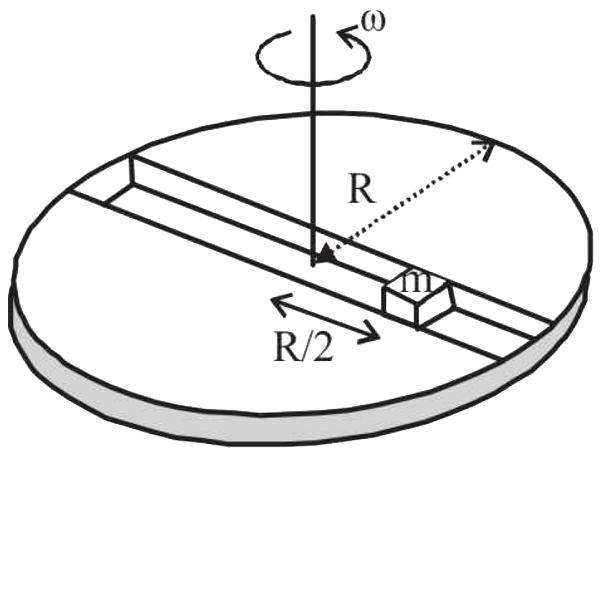
The distance r of the block at time is
View SolutionA frame of reference that is accelerated with respect to an inertial frame of reference is called a non-inertial frame of reference. A coordinate system fixed on a circular disc rotating about a fixed axis with a constant angular velocity ω is an example of non=inertial frame of reference. The relationship between the force →Frot experienced by a particle of mass m moving on the rotating disc and the force →F∈ experienced by the particle in an inertial frame of reference is
→Frot=→Fin+2m(→vrot×→ω)+m(→ω×→r)×→ω.
where →vrot is the velocity of the particle in the rotating frame of reference and →r is the position vector of the particle with respect to the centre of the disc.
Now consider a smooth slot along a diameter fo a disc of radius R rotating counter-clockwise with a constant angular speed ω about its vertical axis through its center. We assign a coordinate system with the origin at the center of the disc, the x-axis along the slot, the y-axis perpendicular to the slot and the z-axis along the rotation axis (→ω=ωˆk). A small block of mass m is gently placed in the slot at →r(R/2)ˆi at t=0 and is constrained to move only along the slot.
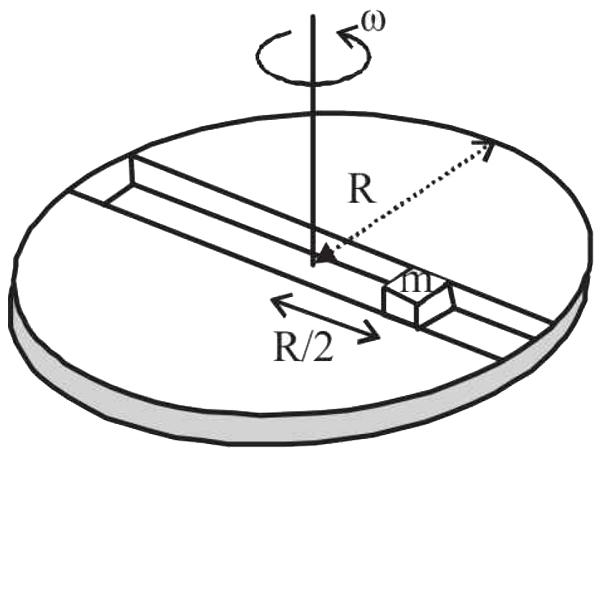
The net reaction of the disc on the block is
View SolutionA body is under the action of three forces →F1,→F2and→F3. In which case the body cannot undergo angular acceleration ?
View Solution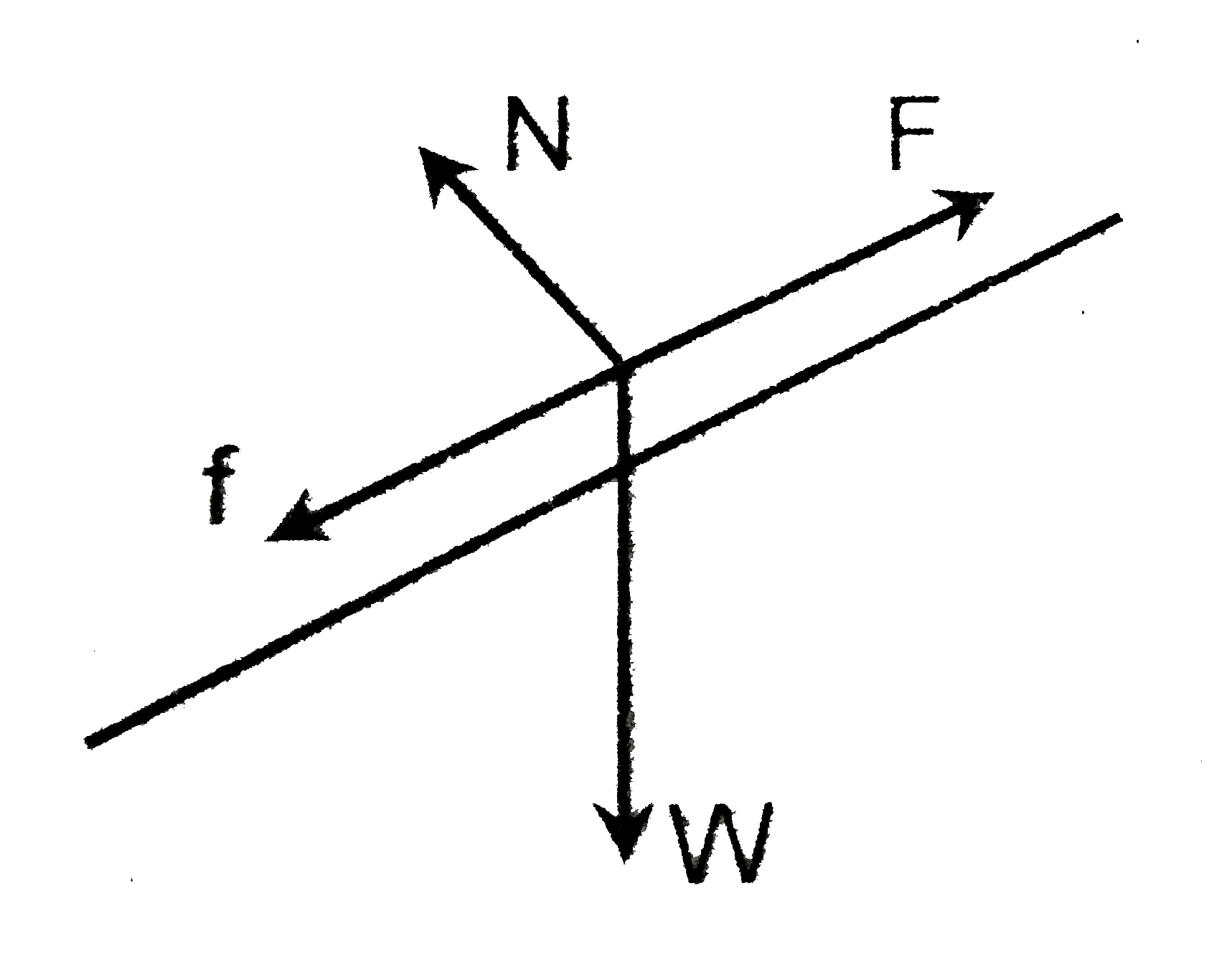
An object is being pushed at constant speed on an inclined plane. The free body diagram of the object is shown with the gravitational force represented by W, the friction force by f, the applied external push parallel to the incline by F, ad the normal force with surface by N. Which one of the following choices represents correct relationships between the forces?
View Solution